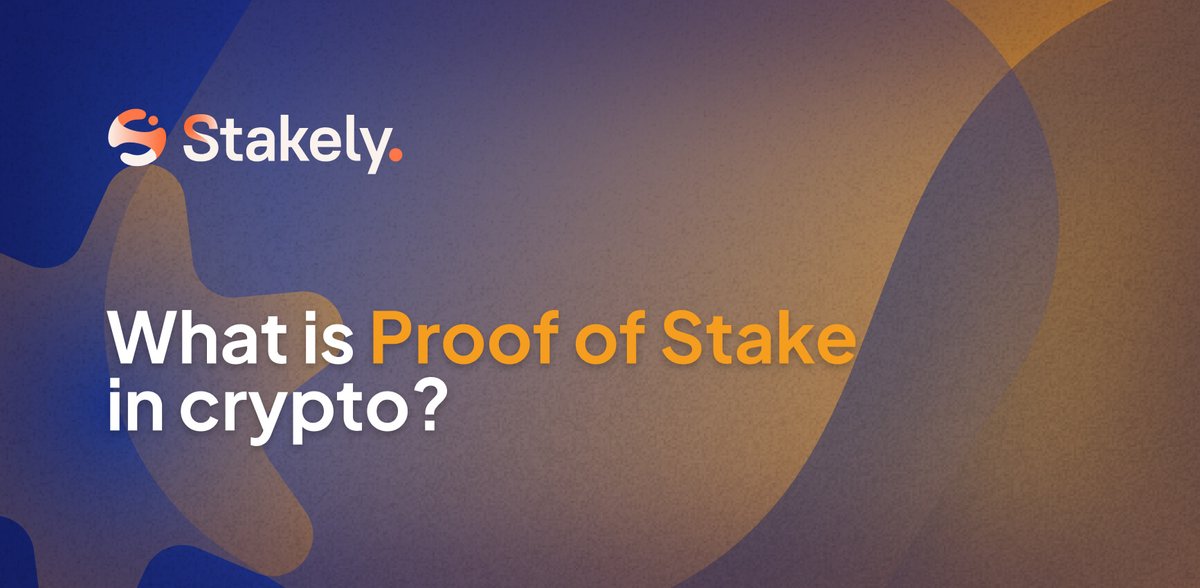What makes a blockchain work without bosses, without censorship, and permissionless? 🤔
If you're new to crypto, this thread is for you 👌
We’ll break down the layers of a blockchain, with a spotlight on the most critical one: the consensus layer 👇

💡 First things first: a blockchain is way more than a digital ledger
It’s made of stacked layers, like a tech lasagna 🍝
Each layer plays a key role in the network’s security, decentralization, and performance
These layers are:
✅ Layer 0: Infra (hardware + nodes)
✅ Data layer: the ledger (blocks, hashes)
✅ Network layer: P2P comms
✅ Consensus layer 💡
✅ Execution layer: rules & contracts
✅ Application layer: dApps, wallets
📌 Among all, the consensus layer is the soul of the system
It’s what lets all nodes agree on which transactions are valid, without trusting each other
Without it, a blockchain just doesn’t work
So... what is consensus? 🤔
It’s the process that lets nodes agree on the valid state of the network
The goal is to:
✅ Keep a single source of truth
✅ Incentivize honest behavior
✅ Prevent attacks (double-spend, forks, etc)
You’ll notice different chains use different consensus models
That’s because there’s more than one, and each comes with tradeoffs
Let’s go over the big ones 👇
1. Proof-of-Work (PoW) ⭢ Used by Bitcoin
✅ Very secure
✅ Highly decentralized
But...
❌ Energy hungry
❌ Slow + expensive
⚙️ Miners solve puzzles. The one who works the hardest gets to add the next block
2. Proof-of-Stake (PoS) ⭢ Used by @ethereum since 2022
✅ Efficient + eco-friendly
✅ Scalable
But...
❌ Risk of power concentration
⚙️ Validators stake tokens. The more you stake, the more chances to propose blocks
@ethereum 3. Delegated PoS (DPoS) ⭢ Example: EOS, TRON
✅ Fast + efficient
✅ Built-in governance
But...
❌ Cartel risk
❌ Less decentralized
⚙️ Users vote for a few delegates to validate on their behalf
@ethereum 4. Proof-of-History (PoH) ⭢ Used by @solana
✅ Ultra-fast (thousands of TPS)
✅ Precise time ordering
But...
❌ Needs beefy hardware
❌ More centralized
⚙️ It doesn’t replace PoS, it complements it. PoH timestamps transactions verifiably
@ethereum @solana 5. Proof-of-Authority (PoA) ⭢ Popular in private chains
✅ Fast + reliable
✅ Low energy use
But...
❌ Highly centralized
❌ Requires trust in public identities
⚙️ Works well for enterprise or government blockchains
@ethereum @solana 💡 Other, lesser-known models:
⭢ Proof-of-Burn (PoB): burn tokens to validate
⭢ Proof-of-Capacity (PoC): use storage space
⭢ Proof-of-Elapsed Time (PoET): wait random time
⭢ Proof-of-Importance (PoI): based on user network activity
@ethereum @solana 🧠 Bottom line:
There’s no “perfect” consensus mechanism
It’s always a tradeoff between:
🔒 Security
📈 Scalability
🌐 Decentralization
Each chain chooses based on its goals
@ethereum @solana If you understand consensus, you understand how blockchains work 💡
It’s the nervous system of decentralized networks
Now that you know... What’s your favorite consensus mechanism and why? 🤔
1.3K
0
The content on this page is provided by third parties. Unless otherwise stated, OKX TR is not the author of the cited article(s) and does not claim any copyright in the materials. The content is provided for informational purposes only and does not represent the views of OKX TR. It is not intended to be an endorsement of any kind and should not be considered investment advice or a solicitation to buy or sell digital assets. To the extent generative AI is utilized to provide summaries or other information, such AI generated content may be inaccurate or inconsistent. Please read the linked article for more details and information. OKX TR is not responsible for content hosted on third party sites. Digital asset holdings, including stablecoins and NFTs, involve a high degree of risk and can fluctuate greatly. You should carefully consider whether trading or holding digital assets is suitable for you in light of your financial condition.

